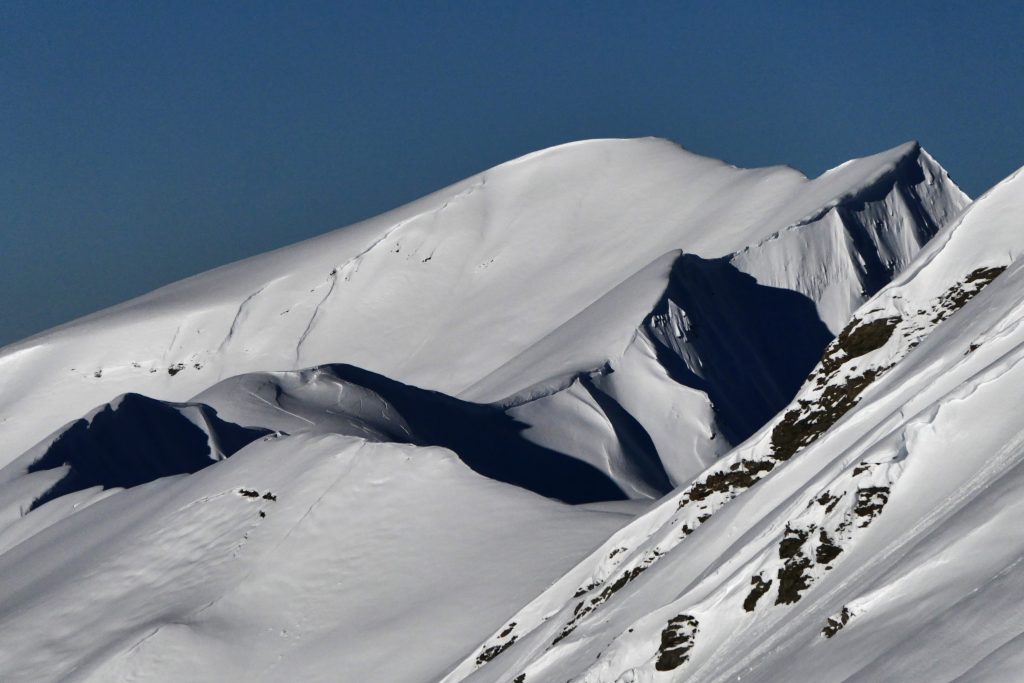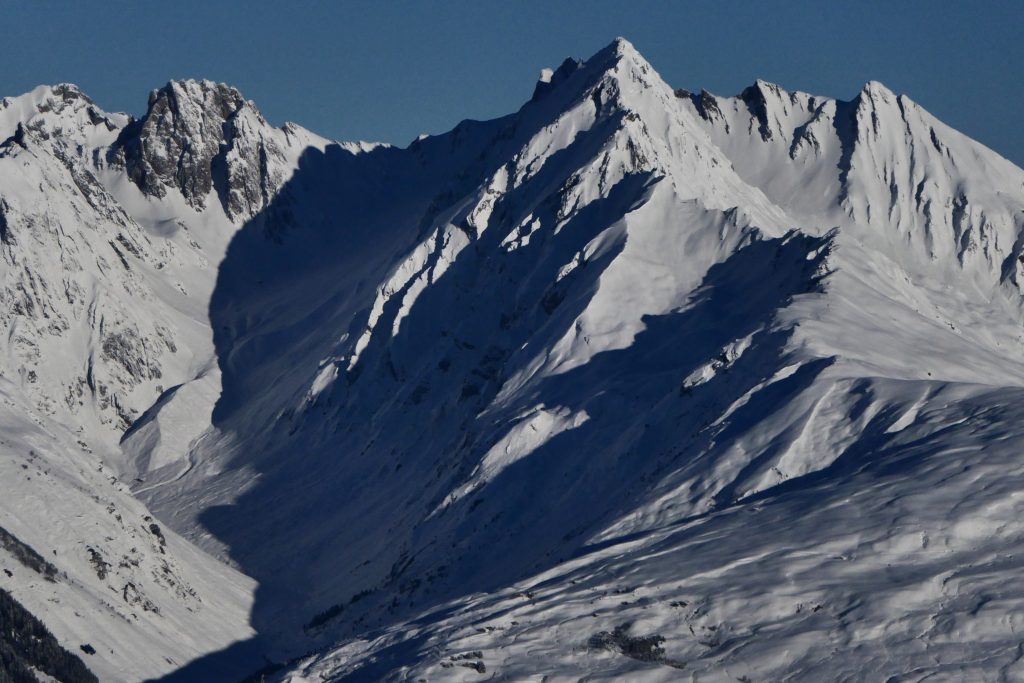After warming up but before teaching any new movements everyone was filmed with their current level of skiing. When asked to explain three key things to do to make a turn Alfie accurately recited the ski instructor’s manual. In Contrast Caroline reversed it and Amanda admitted she wasn’t sure.
This is completely normal – because that’s what conventional ski instruction does to people. I congratulated Alfie but then had to inform him that almost everything in that hallowed ski instructor’s manual is wrong. Amanda alone was skiing with some natural movement at this stage.
Dynamics
Our lesson started out with “dynamics” – instead of transferring weight (outwards) to the new outside we had to thrust the Centre of Mass (body) inwards towards the direction we want to turn – (invisible magic wall!)
Basic Dynamics (with a few details added that weren’t mentioned during the lesson)
- Skis must be travelling forward – like a bicycle travels forward
- This is mainly about using the outside leg (start of new turn) to push the centre of mass into the centre of the new turn – for the whole duration of the turn
- There is no “balance” when skiing – “dynamics” is the physics of disequilibrium
- You are looking for stability from organised accelerations (ski technology!)
- There is no “Centrifugal Force” acting on the skier – only a deflection inward away from a straight line. This deflection is used to lift the skier up at the end of the turn – which involves “finishing” the turn – I.E. turning almost back up the hill.
- Remain square to the skis (follow the skis around the turn with your body) until you are really comfortable with movement of the centre of mass and clearly aware of moving it.
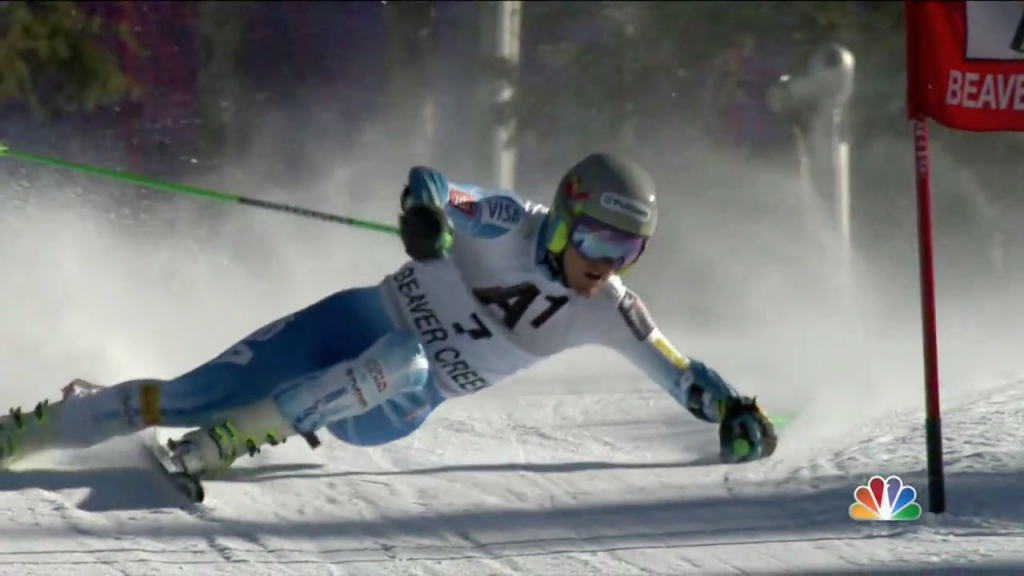
Pivot (Skis sliding Sideways)
Once Dynamics was understood and after a little practise we went straight into “pivot” – the antithesis of the dreaded “snowplough”. Skis naturally “swing” into a turn from the uphill edge…
Pivoting is derived from the skis sliding sideways and can be developed from side slipping. With a “pure pivot” as an exercise there is no forward travelling of the ski across the hill. Support for the centre of mass is now provided by support from a downhill pole plant. This is the real reason why we have ski poles! There is a full dedicated explanation of pivoting at the following link: “PIVOT“
Combining Dynamics and Pivot
- Dynamics depends of forward motion of the skis and lateral falling/pushing of the centre of mass
- Pivot depends on lateral motion of the skis – but always with the centre of mass being driven inward (toward the turn centre)
- The two can be combined – when there is both forward and lateral motion – making overall control of trajectory and speed totally under control of the skier
- The essential element to take from combining pivot and dynamics is to execute the turn transition from the uphill edge of the uphill ski – noting that the ski enters the new turn more easily than when on its inside edge and this also prevents stemming (and body rotation)
- before starting a turn make sure the uphill foot/ski is close to the downhill ski – this guarantees a smoother pivot to initialise the turn. This is why in many sow/terrain conditions people ski with their feet close together.
Once we had both Dynamics and Pivot operational we took an “After” video…
Skating
Skiing is a form of skating – it’s just that skis bend and scribe arcs on the ground and are generally used on slopes not flat lakes. Skating actions are fundamental for a skier’s development because they involve independent leg action where only one leg at a time is really used. Although skiers can stand on two feet the body is oriented specifically on one hip joint at a time (when turning) and has to function as if standing on one leg. Skating exercises such as skating step turns are helpful in developing basic skills. Skating turns use diverging skis (opposite from snowplough) and incremental stepping of the centre of mass inward toward the turn centre. This is ideally the first sort of turning that any complete beginner should experience – on flat terrain.

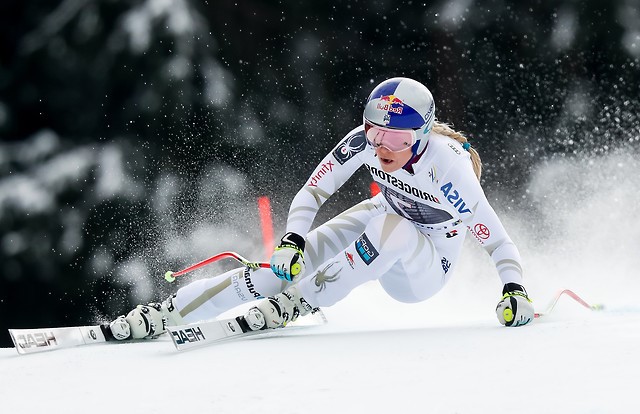
Body Management
(Hip Angulation)
There’s a compilation of notes on the subject here: http://madeinmountains.com/chiskiing/
Take a look at the two Olympic champion skiers in the photograph below.
Killy’s image from the 1960s has his chest facing downhill whereas Noel’s image from 2022 has his chest facing forward. What Killy is doing destroys your lower back and is probably why he never went on skis again after he stopped racing.

Protecting the Spine
- Hold the front of the pelvis up – aiming for “neutral pelvis”
- During the turn pull the outer hip backwards so that the ski doesn’t pull it in front of your ribs
- Look for a stretch between the ribs and hip joint
- Look for a reflex contraction of the lower abdominals – the postural reflex
- Keep the shoulders/chest following the skis (to some degree)
- Always “counter turn” the pelvis more than the chest/shoulders
- For tighter turns with more pivoting start to use the pole plant to some degree
- The more “countered” the pelvis the more the next turn can be “anticipated”
Source of Hip Angulation
The upper body needs to tilt forward over one hip joint – then rotate around it. This is in addition to pulling back the outside hip etc.
The body shape produced alters the location of the centre of mass enabling pressure on the ski fronts and also greater agility both into and out of turns – and pole planting if the skis are swinging laterally.
The hip angulation also provides flexion of the hip joint that gives absorption of shocks.
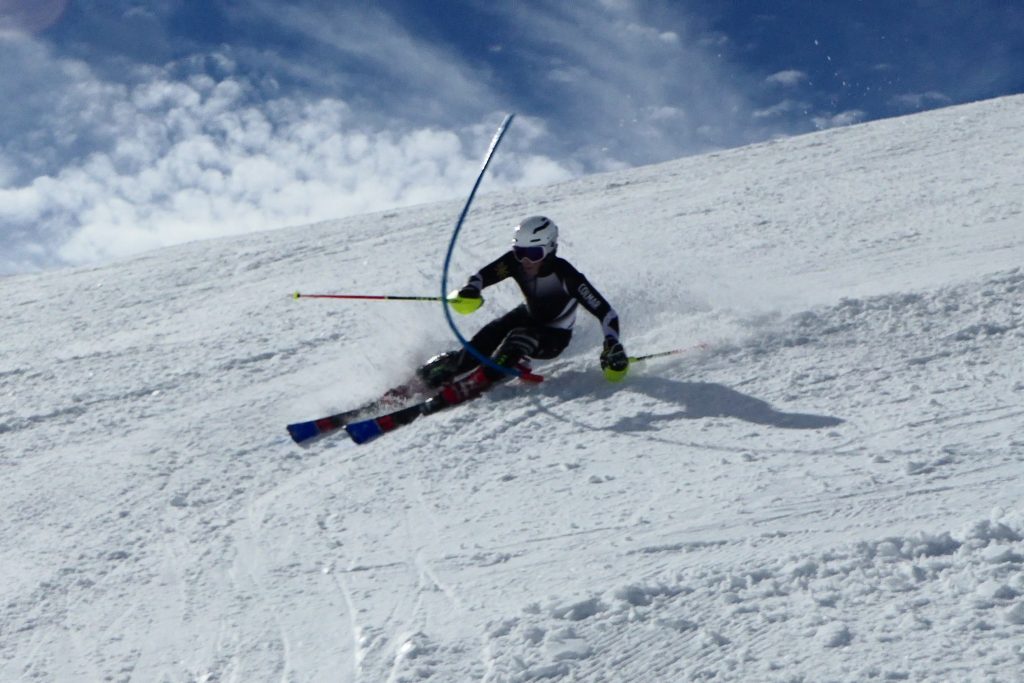
Pressure on the ski fronts
Feet
We kept it simple for the feet – just during the “push” with the uphill leg (to start a turn) making sure not to twist the foot into the turn – instead twist it slightly away from the turn. Rise up on the balls of the feet slightly and try to keep pressure on the fronts of the skis.
Today’s photos…
